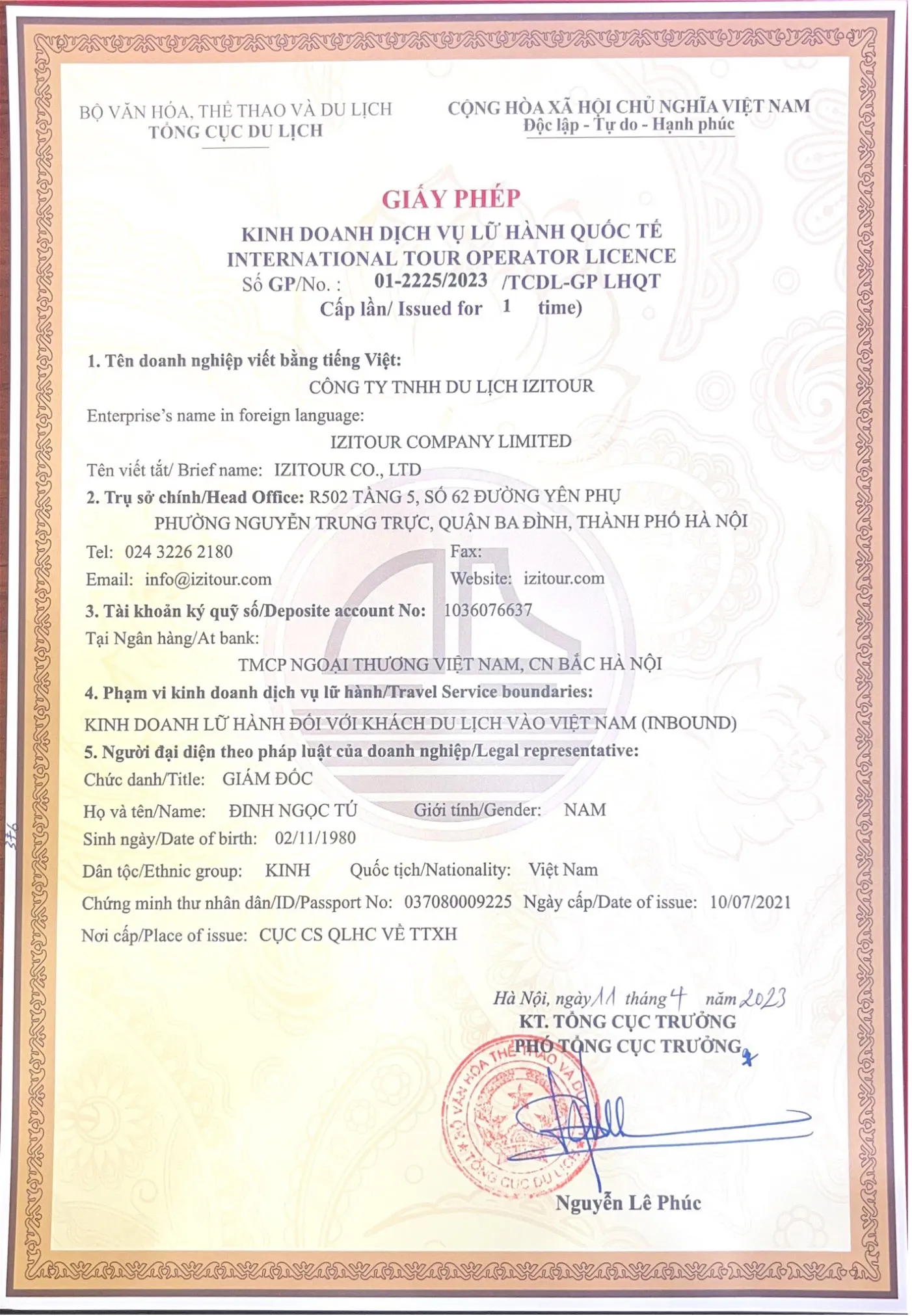Hidden deep in the mountains of Cao Bang, Dia Tren is a quiet village where tradition still lives on. Life moves slowly here, in harmony with nature. This peaceful landscape is home to a craft that has been passed down for generations: the making of giấy bản or traditional handmade paper.
Traditional paper making craft has become a part of Dia Tren village’s soul. Made by hand from natural materials, each sheet carries stories, beliefs, and the quiet pride of Nung people who are deeply connected to their land and culture. Used in spiritual ceremonies and daily life, this paper holds meaning beyond its form. In this article, you’ll discover the beauty of rural landscape, the people, the paper and why preserving this craft matters.
The peaceful village of Dia Tren
Lying quietly among the forested hills of Cao Bang, near the border with China, Dia Tren Village is far from the busy cities - peaceful, almost timeless. The road that leads to the village winds through soft green slopes, past fields of corn and cassava, and under the shade of old trees. The air here is fresh and cool, especially in the early morning when fog still clings to the mountain tops. Roosters call in the distance. Life in Dia Tren moves with nature’s rhythm - steady, calm, and full of care.
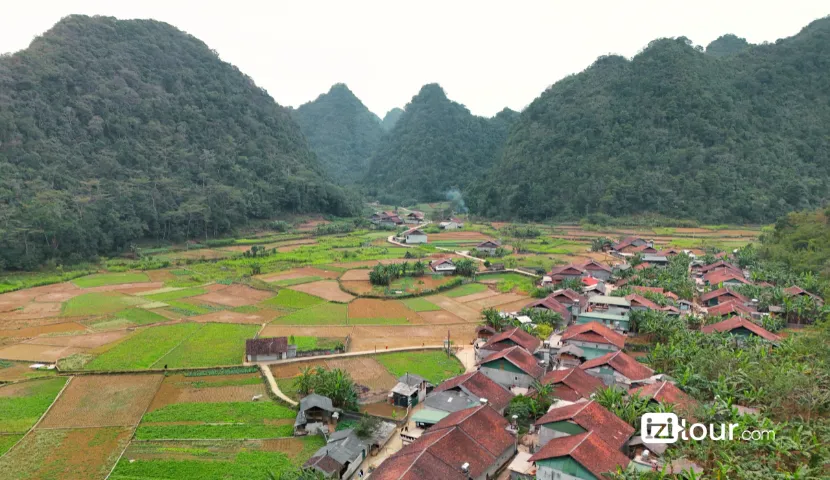
The tranquil village surrounded by lush mountains and green fields
It’s in this simple and beautiful setting that one of Vietnam’s oldest traditional crafts quietly continues. Here, the making of “giấy bản” (traditional paper) is woven into the seasons, the festivals and the deep respect the Nung people have for their ancestors.
A living craft
Made from the bark of the May Sla tree, giấy bản is crafted through a meticulous handcrafting process passed down through generations. It is valued for its exceptional durability, allowing it to preserve important documents such as poetry, folk tales, and family genealogies for decades when stored in a dry place. Beyond its practical uses, giấy bản plays an essential role in traditional ceremonies, including Tet celebrations, funerals, and weddings among the local ethnic communities. Its lightweight, resilient texture ensures that it doesn't smudge when written or drawn on, and it is resistant to termites, breakage, and moisture damage—qualities that make it an ideal material for spiritual rituals and the preservation of cultural heritage.
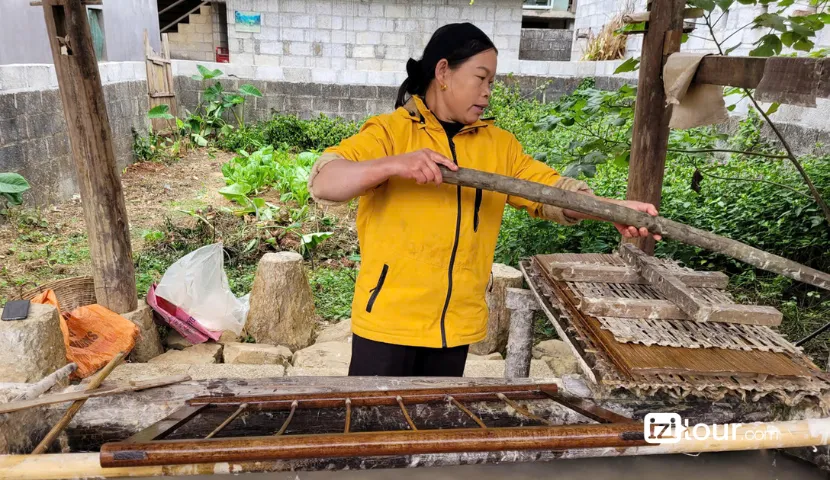
Preparing the materials for paper-making
This tradition has survived because it is woven into the life of the village. This craft has been passed down for hundreds of years, surviving through memory and manual skill. Most of the artisans are women, who learn the technique from their mothers and grandmothers. Every step of the process is done by hand, using natural materials gathered from the surrounding forests. Clean spring water, bamboo moulds, and the warmth of the sun all play their part. Nothing is rushed. Nothing is wasted.
How this traditional paper is made
The process of making paper is an art that requires patience, skill. Every sheet of paper begins with the bark of the May Sla tree, carefully stripped to remove the dark outer layer, leaving only the white inner core. This raw material is only found in the surrounding hills. This bark is then soaked in water to soften it, before being mixed with quicklime in a large container. The mixture is simmered for 2-3 hours to break down the fibres. After that, it’s taken to a nearby stream where it is soaked for 12 hours, allowing the materials to fully soften.
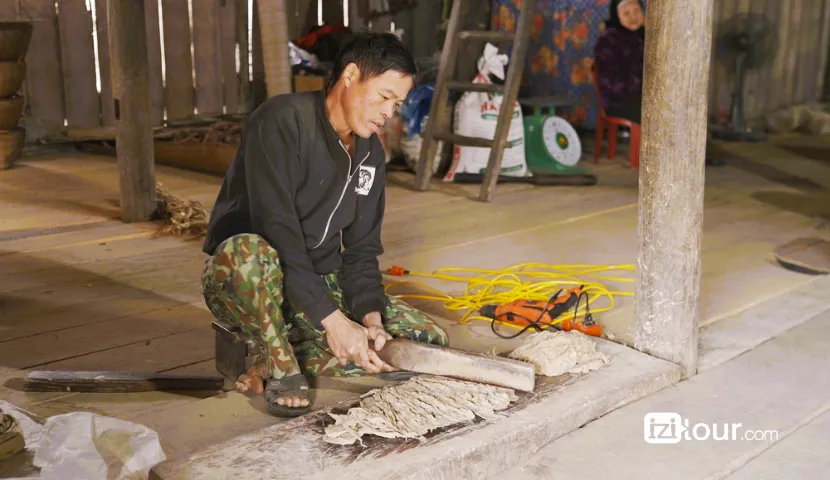
Grinds the bark into a pulp to be used in paper production
Once the mixture is ready, it’s pounded for about an hour to refine the texture and make the pulp smoother. This extra step ensures the paper will have a finer, more delicate finish. The pulp is then poured into a water trough where it is stirred to create an even consistency. At this stage, the pulp is mixed with a natural adhesive to bind it together. The process is not rushed. Artisans know that the quality of the paper depends on this stage. The pulp must be just right, neither too coarse nor too fine. It takes time to achieve the perfect consistency.
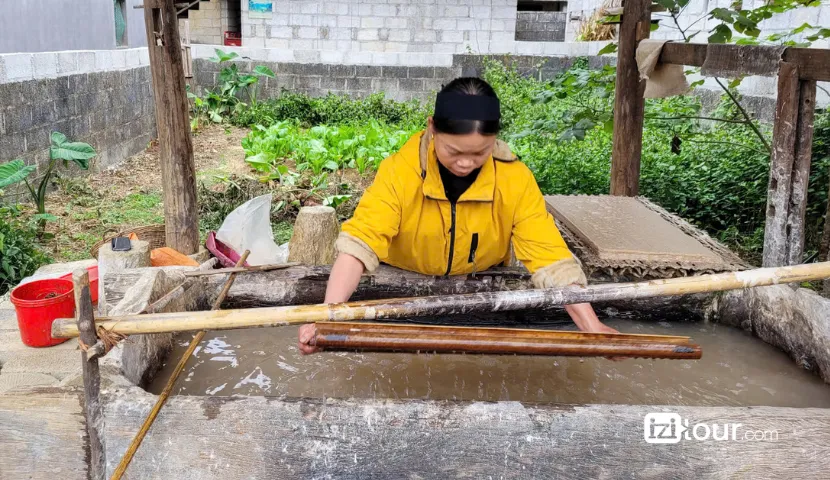
Immersing the wooden frame into the pulp to create sheets of paper
Next comes the shaping process. The mixture is scooped up using a bamboo frame called a mái, covered with a fine net. The frame is submerged into the water and carefully lifted, allowing the pulp to settle evenly across the surface. The craftsman shakes the frame gently to spread the pulp, ensuring that each sheet is smooth and uniform.
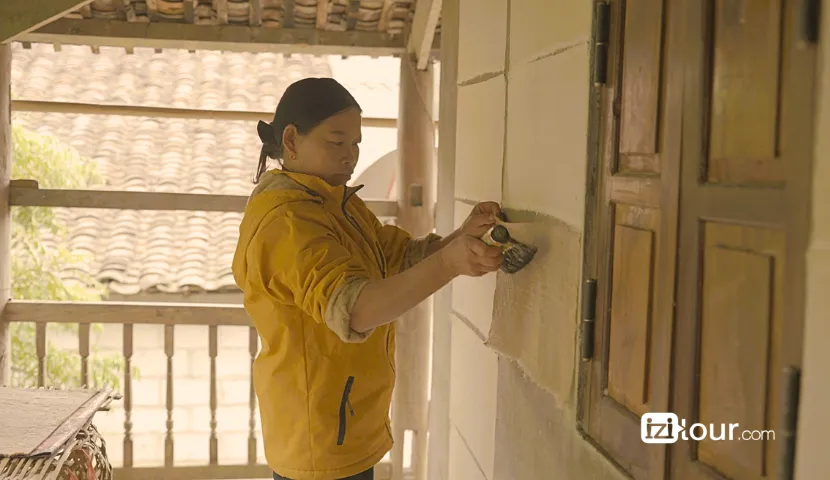
Applying the wet handmade paper to the walls to dry it
Once the pulp settles, the sheet begins to take form. It is then carefully placed on a cloth or a flat surface to dry. The drying process can take several days, depending on the weather, but during this time, the paper gradually gains its soft yet firm texture, slightly translucent appearance, and natural, earthy finish. Each sheet is checked for quality before being peeled off the drying surface.
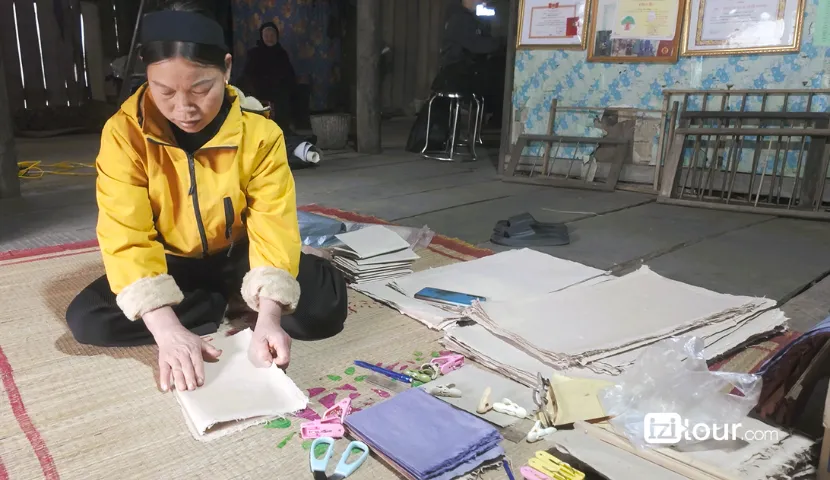
Final touches on the handmade paper, ready for drying
When fully dry, the giấy bản is ready to be used, whether for rituals, offerings, or ceremonies that honour the traditions of the Nung people. What makes this paper so special is not just its appearance, but the care and respect embedded in each stage of its creation
The process is lengthy, but there is something fulfilling about witnessing the transformation of raw materials into paper through human hands. In a world that often values speed and efficiency, the traditional craft of giấy bản stands as a reminder that the most meaningful things often take time and that the beauty of such things is found in the patience with which they are created.
Why visiting this paper making craft village
In today’s rapidly changing world, many traditional crafts are at risk of fading. But the art of making giấy bản is a powerful reminder of how much cultural heritage is worth preserving. The artisans in Cao Bang are quietly standing their ground, keeping this valuable heritage alive with each sheet of paper they create.
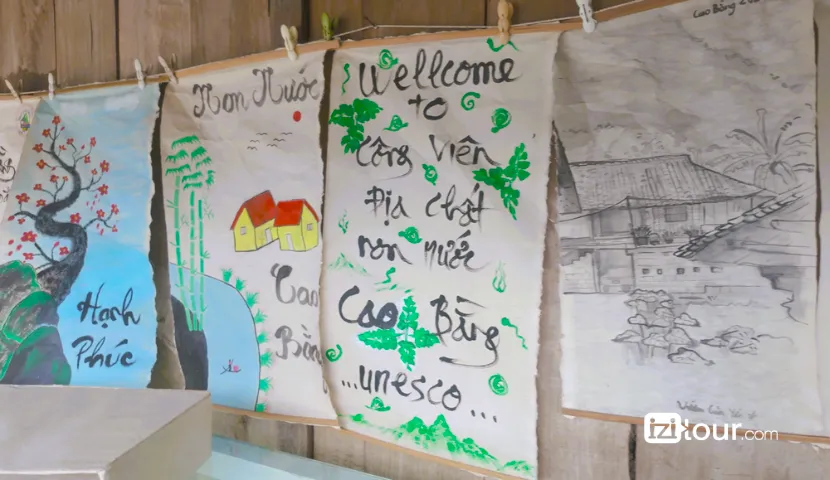
Finished paper products hanging for display at the craft village
Tourism plays a vital role in this preservation. By visiting the village, experiencing the paper-making process, and supporting the artisans, travellers contribute to the continued survival of this ancient craft. They provide not only an income to the local community but also a reason to keep these traditions alive. Moreover, it’s an opportunity for cultural exchange, where visitors can learn, and the villagers can share their stories and customs.
Planning your visit to paper craft village
If you're considering a visit to Cao Bang and you're into this unique craft, don’t forget to visit this village.
How to get there
Dia Tren village is located about 30 kilometres from Cao Bang city and a 6-hour drive from Hanoi. It’s convenient to get there on your own or go with an experienced local guide.
From Hanoi: There are buses from Hanoi to Cao Bang city, which operate services from My Dinh Bus Station or Gia Lam Bus Station to Cao Bang Bus Station. For more flexibility and comfort, you can hire a car or take a private taxi directly from Hanoi to the village. The drive will take around 6 hours, passing through scenic mountainous landscapes and quiet villages along the way.
From Cao Bang city: You can take a local bus from the city centre or have your private car take you there. The roads are winding and scenic, so be prepared for a journey that’s as much about enjoying the natural landscape as it is about reaching your destination.
When to visit for best experience
The best time to visit any handicraft village is during the dry season, from October to April, when the weather is mild and the roads are more accessible. The village is especially beautiful during the spring months, when the surrounding hills are covered in lush greenery, and the paper-making process is in full swing.
What to expect
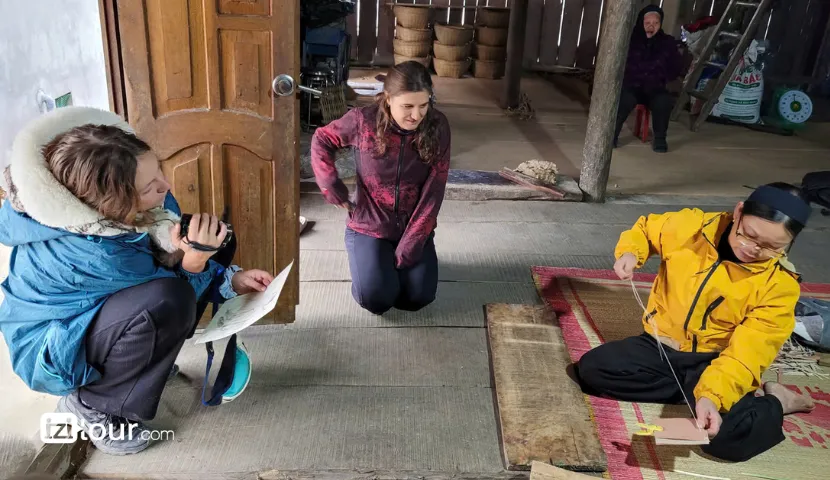
Visitors observe and learn the art of traditional paper-making
Once you arrive, you’ll be welcomed by the warm hospitality of the Nung people. Many of the artisans are open to visitors and will happily show you the process of making giấy bản. You’ll have the opportunity to watch the paper being made step by step, from the harvesting of the May Sla tree bark to the final drying stages.
In addition to learning about the paper-making craft, you can also take time to explore the beautiful surroundings. The village is nestled between mountains and rivers, with scenic views and peaceful landscapes perfect for photography or a quiet walk. If you’re interested in learning more about the Nung culture, you can also visit local temples or join in a festival, depending on the time of year.
Travel tips
Pack layers, as the weather can change quickly. Bring a jacket if it gets chilly, and waterproof gear if you visit during the rainy season.
Be polite, ask before taking photos, and respect the village’s traditions.
There are no ATMs in the village, so bring enough cash for purchases.
Enjoy the village and the craft. If you can, stay overnight at a homestay to fully experience the local culture.
In a modern world that often values speed and efficiency, the traditional paper making craft feels like a form of cultural courage. It reminds us that beauty can still come from the land, shaped slowly by hand and that some traditions are too precious to be lost. The next time you visit Cao Bang, don’t forget to immerse yourself in this beautiful craft village.
To make your trip truly unforgettable, consider booking a tour with IZITOUR, offering unique experiences with local guides. You’ll have the chance to explore the village, meet the artisans, while supporting responsible tourism. We’d love to hear your thoughts or answer any questions you may have! Feel free to share your experience or ask us anything in the comments below, contact us via email at [email protected]. Our travel consultant will get in touch to create a tailor-made journey just for you!
Explore tailor-made Cao Bang tours & treks
See more:
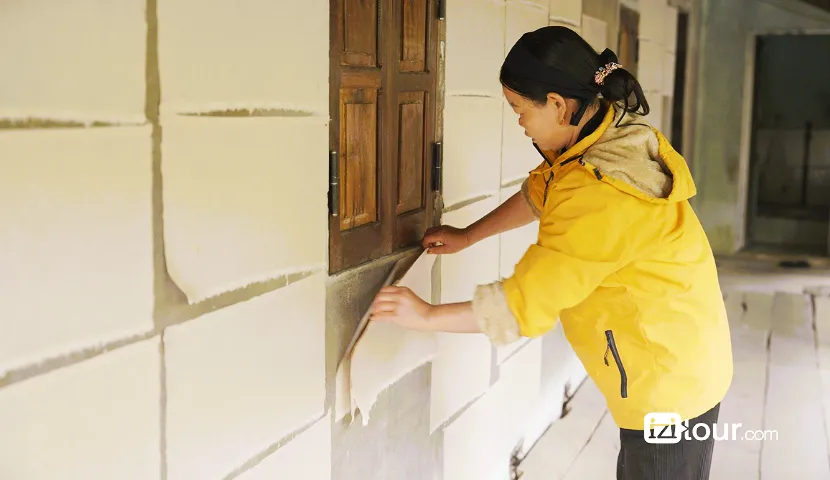








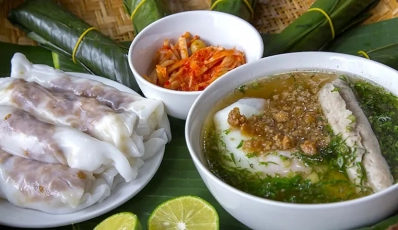



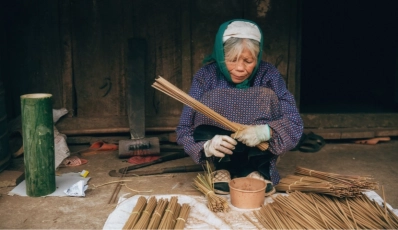
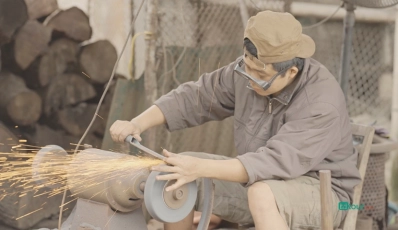
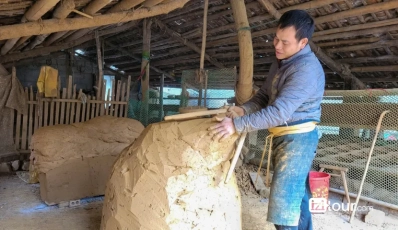
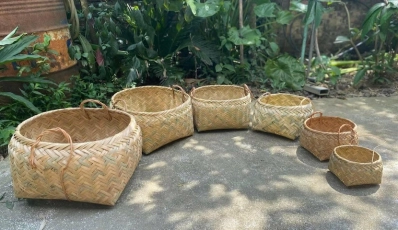




 TRAVELERS' CHOICE 2025
TRAVELERS' CHOICE 2025 